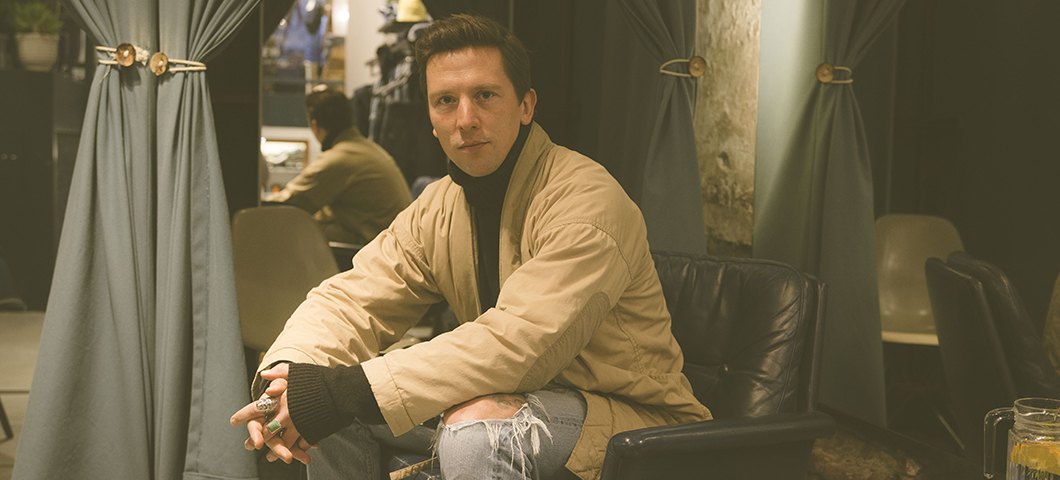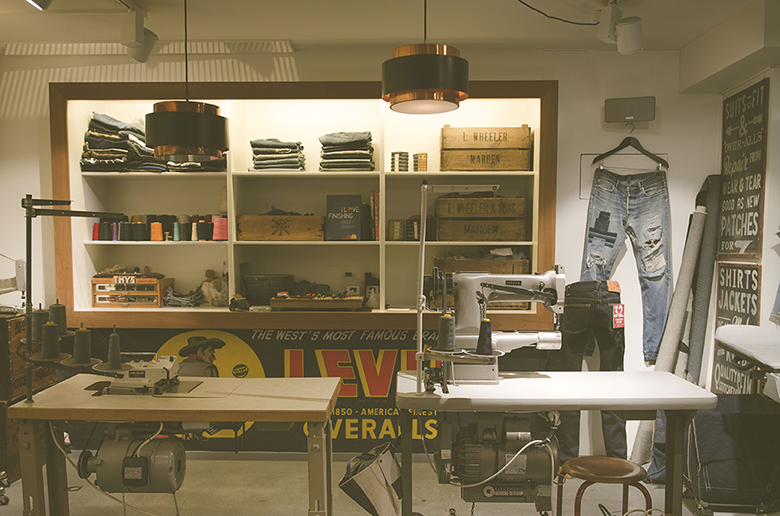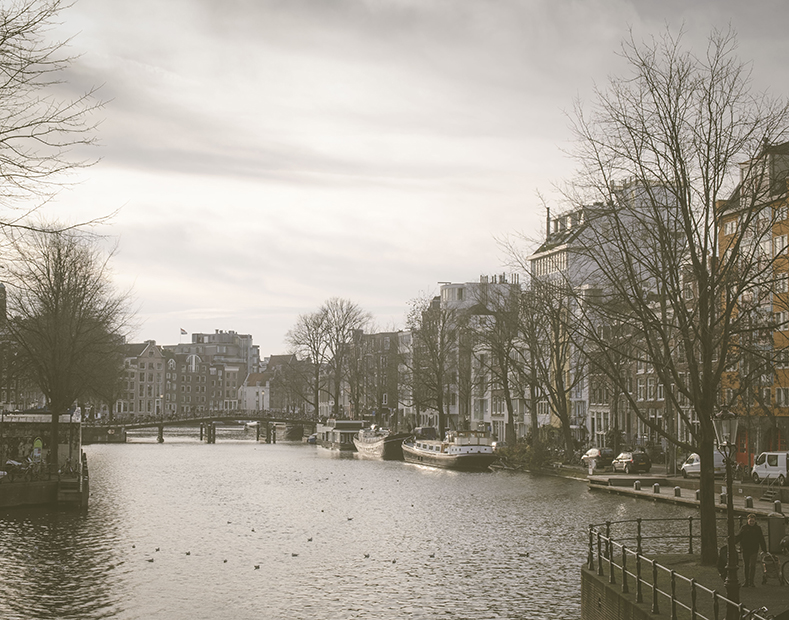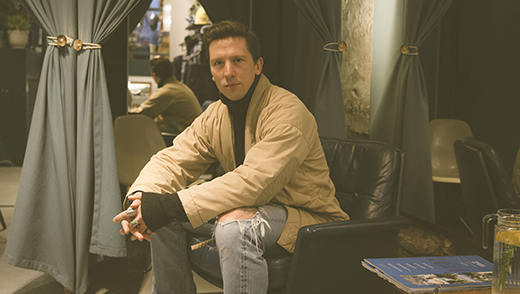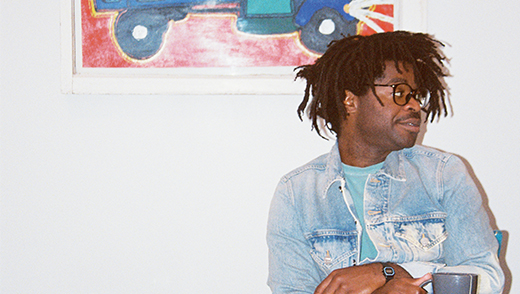What drew you, and held you, to a career in fashion? And then to denim, in particular?
When I was very young I used to dress up in my father’s 70s clothes. My dad never had much growing up so by the time he got older he could never throw things away. He kept his most beloved jeans, biker boots and leather jackets with some other epic stuff like his brown velvet wedding suit. Sorting through that time machine was the first chapter in my love story with vintage clothes and denim in particular. At the age of 15, I took on my first job in retail and fell in love with working with a team, setting targets for the day and being surrounded by the best gear available. It was an amazing group of people that I was able to learn from, and then a year later a denim store in Hague asked me to join their team and from that moment onwards I was hooked on denim. When I was 24 and started working on my business plan for Tenue de Nîmes. A month after I turned 26, I opened the doors of my first store.
What do you look for in a pair of jeans?
A good pair of jeans should be durable, reliable, like a friend that helps you get the most out of your day. Jeans went from work wear to fashion and then were drawn into fast fashion. That last stage really harmed the true concept of denim the way I look at it. To me, jeans are piece of clothing that work everywhere always. They should mold to your body, become personal to you, something you are attached to. Jeans tell stories, your story…
What were some of the mistakes you made when starting out? What did you learn from these mistakes?
Patience is what I wish to put in the mind of every young entrepreneur out there. When I was starting out, I was lucky in to have people like my father-in-law that prevented me from making quick decisions. I remember when we were looking to open our first location and I called my father in law saying: “I found it! I found the perfect spot!” He was kind enough to come to Amsterdam but when we stood in front of the building he refused to even go in. He simply said: “This is not it.” What I took from those days is that it’s sometimes better to wait and then go for it when the right opportunity presents itself.
Are there any particular philosophies you work by?
Always treat people the way you want to be treated. It’s the first lesson we instill in people that are new to the team.
What skills do you believe are necessary for success?
I honestly think determination is the only thing you need to have besides some common sense and a little bit of luck here and there.
Working in fashion/owning a store sounds like an exciting job, but what are some of the pressures that come with owning a store that sets a standard of retail?
Working in fashion, especially as an entrepreneur requires a lot of time and effort. We are open 7 days a week and today’s economy requires a 24hr approach. You have to have the appetite for it. We work day and night—and weekends are generally the most important days of the week. So, you really have to love what you do in order to keep it going.
I see myself as so fortunate, I get to do what I love every single day. How many people can say that?
How has having a brick and mortar store evolved with the rise of online shopping?
Everything has changed. When I began working in this business hardly anyone was selling online. My business was protected geographically which means that we would get exclusivity within a certain territory. This exclusivity disappeared when online shopping became more important. Stores in Sao Paolo are now my competitors. The other side of the story is that my potential customer base went from 800,000 (Amsterdam) and 160 million (The Netherlands) to 8 billion (the world). Now, I look at the Tenue de Nîmes stores as the Vatican of our company. People come and enjoy the works of Michelangelo when they have time, but visit the online ‘church’ for their day-to-day needs and desires.
How do you keep shoppers interested in coming in?
I believe that although many technological improvements have made our business ‘smarter’, but people still only need 2 very basic things: a good product and to be taken care of. It might sound simple, but there is so much trash out there so we need to make people aware (again) of what it means to buy a slow product rather than a quick, inferior piece of clothing. And if people feel welcome and you take care of them well, I am confident you can always run a good business anywhere.
What are some of your favorite stores outside of Amsterdam?
When in Paris my first pit stop is Space Kiliwatch. My friend Jacques runs the vintage department from the back of the store. Their vintage business is huge and Kiliwatch is the place where they put all their real treasures. Paris aside, I could shop in Tokyo every single day especially at United Arrows. Their curation and attention to detail is contagious.
Why was Amsterdam the perfect place to launch your stores?
Historically speaking, Amsterdam was built by tradesman. The canal houses are built around the core of the city and at a slight angle so it was easy to load ships. Amsterdam has always served as the center for young people in the Netherlands. It is the city where it all happens. So, to me it was never a matter of ‘if’ I had to go to Amsterdam for adventure, but just ‘when’.
Favorite restaurants in Amsterdam?
Amsterdam has so much fantastic food to offer. There is a new group of Chefs in the city that really provide a totally new vision on traditional cuisine. I am a big fan of Pieter Smits and his restaurants Rijsel and Scheepskameel. A couple friends recently opened a Mediterranean restaurant at the Noordermarkt called Domenica. It’s the kind of place you want to spend every weekend…
Who are some of your creative heroes?
Inspiration is everywhere. One person that really changed how we dress today is Mr. Ralph Lauren. His modern take on the everyday wardrobe defined how contemporary brands create their collections. Ralph Lauren came up with a compact wardrobe built upon staple pieces such as a button down shirt that would work anytime, anywhere. He would not re-design his whole collection every year, but instead he would create playful variations. If you look at today’s state of fashion I feel we need more of that.

